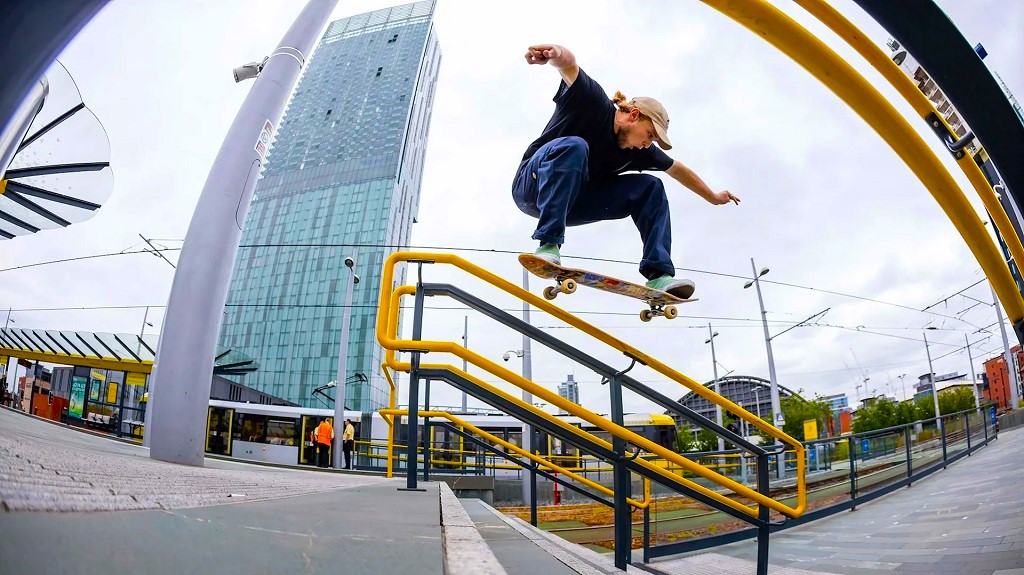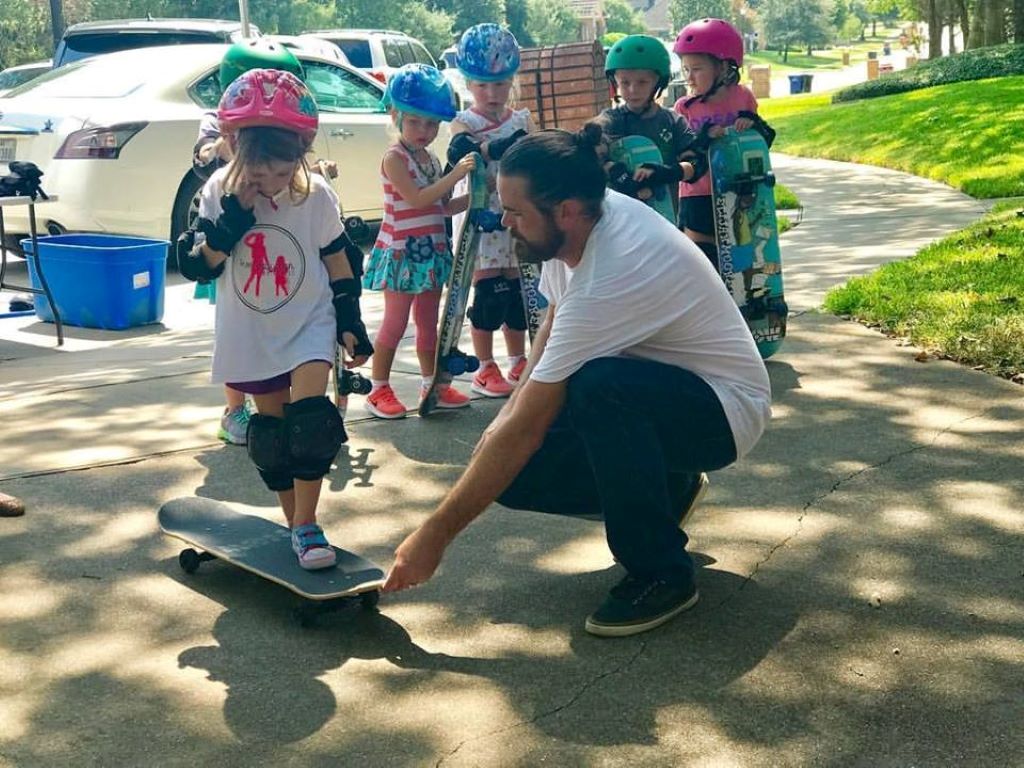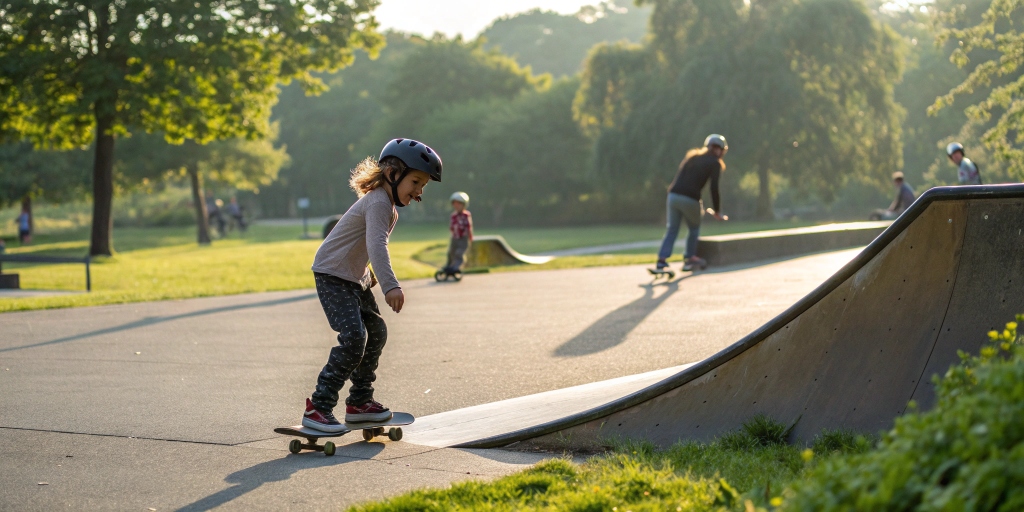Skateboard risers are an essential but often misunderstood component of many skateboard setups. These small plastic or rubber pads sit between your trucks and deck, offering various benefits. However, incorrect use of risers can lead to problems, hurting your skateboarding experience.
Let’s delve into the top five mistakes to avoid when using skateboard risers, ensuring you get the most out of them to enhance your ride.
Teenage Mutant Ninja Turtles Kids Skateboard
Shorty Cruiser Features Fun TMNT Vintage Graphics on Deck & Grip Tape! 60mm x 45mm Wheels, Carbon Steel ABEC 3 Speed Bearings
- Brand: Teenage Mutant Ninja Turtles
- Color: Gray
- Age Range: Kids 8 Years and up
- Skill Level: Beginner
- Material: 8 Plywood Deck
- Theme: Cartoon
- Bearings: Carbon Steel ABEC 3 Speed
- Wheels: 60MM x 45MM
1. Using Risers When You Don’t Need Them
The primary purpose of risers is to prevent wheel bite – that unpleasant (and sometimes dangerous) situation where your wheels make contact with your deck during hard turns. If you’re not experiencing wheel bite, there’s likely no need to add risers.
How to Tell if You Need Risers:
- Wheel Size: Larger wheels have a higher chance of causing wheel bite. If you’re riding wheels larger than 55mm, consider risers.
- Deck Concave: A deeper concave on your deck brings the edges closer to the wheels, increasing the potential for wheel bite.
- Truck Tightness: Loose trucks turn more sharply, again making wheel bite more likely.
If you’re unsure, try riding your board without risers and perform some hard carves. If your wheels touch your deck, it’s time for risers.
Related: Skateboard Tricks: Master Insane Moves!
9-ply Maple Deck skateboard for Cruising, Carving, Tricks, and Downhill
- Brand: Voyager
- Color: Mob
- Age Range: Adult
- Deck Length: 31 Inches
- Deck Width: 7.5 Inches
- Item Weight: 3.99 Pounds
2. Using Too Much Rise
While risers solve wheel bite, using too much height can negatively impact your board’s performance.
- Stability: Excessive height makes your board more wobbly, especially at higher speeds.
- Pop: Increased height lessens the ‘snap’ you get when popping tricks like ollies, making them harder to execute cleanly.
- Turning: Taller setups are less responsive when turning.
Finding the Right Riser Height: Start with a small riser (1/8 inch) and gradually increase the height if you still experience wheel bite. Ideally, find the minimum height that prevents contact between the wheel and the deck.
Sonic The Hedgehog Character Skateboards
Cruiser Skateboard with ABEC 5 Bearings
Brand: Voyager
Color: Sonic & Friends
Age Range (Description): Unisex-teen
Skill Level: Beginner
Deck Length: 31 Inches
Deck Width: 7.5 Inches
3. Ignoring the Hardness of Risers
Risers come in different hardnesses, typically measured using the durometer scale.
- Soft Risers: These absorb vibrations and road shock, providing a smoother ride on rough surfaces. However, they can make your setup feel mushy and less responsive.
- Hard Risers: These offer maximum responsiveness and a more direct feel of the board. However, they transmit more vibrations to your feet.
Choosing the Right Hardness: Consider your riding style and terrain. Prefer cruising and rough surfaces? Softer risers might be better. If you’re into street skating and smooth parks, harder risers offer better performance.
4. Not Accounting for Additional Hardware
Adding risers means you’ll need longer bolts to accommodate the extra height. Using bolts that are too short could lead to the bolts stripping the threads in your trucks, potentially causing them to fall off during a session!
Determining Bolt Length: A good rule of thumb is to add the same amount of length to your bolts as the height of your risers. For example, if you’re using 1/4-inch risers, you’ll want 1 1/4-inch hardware.
5. Mixing and Matching Riser Heights
While possible, using different riser heights on your front and back trucks is generally not recommended. This creates an uneven setup, affecting how your board turns and handles.
Exceptions: There are instances where slightly taller risers on the back might be beneficial:
- Reducing Nosedives: For downhill skateboarding or longboarding, this setup can help prevent the nose of your board from dipping dangerously at speed.
- Customization: Some skaters experiment with micro-adjustments in riser height for a fine-tuned feel.
Conclusion:
Skateboard risers, when used correctly, can improve your ride significantly. By avoiding these common mistakes, you’ll get the most out of them for an enhanced skateboarding experience. Remember, it’s often about finding the ideal setup that works for your personal preferences and skating style. Experiment and keep these tips in mind to find that perfect balance!







